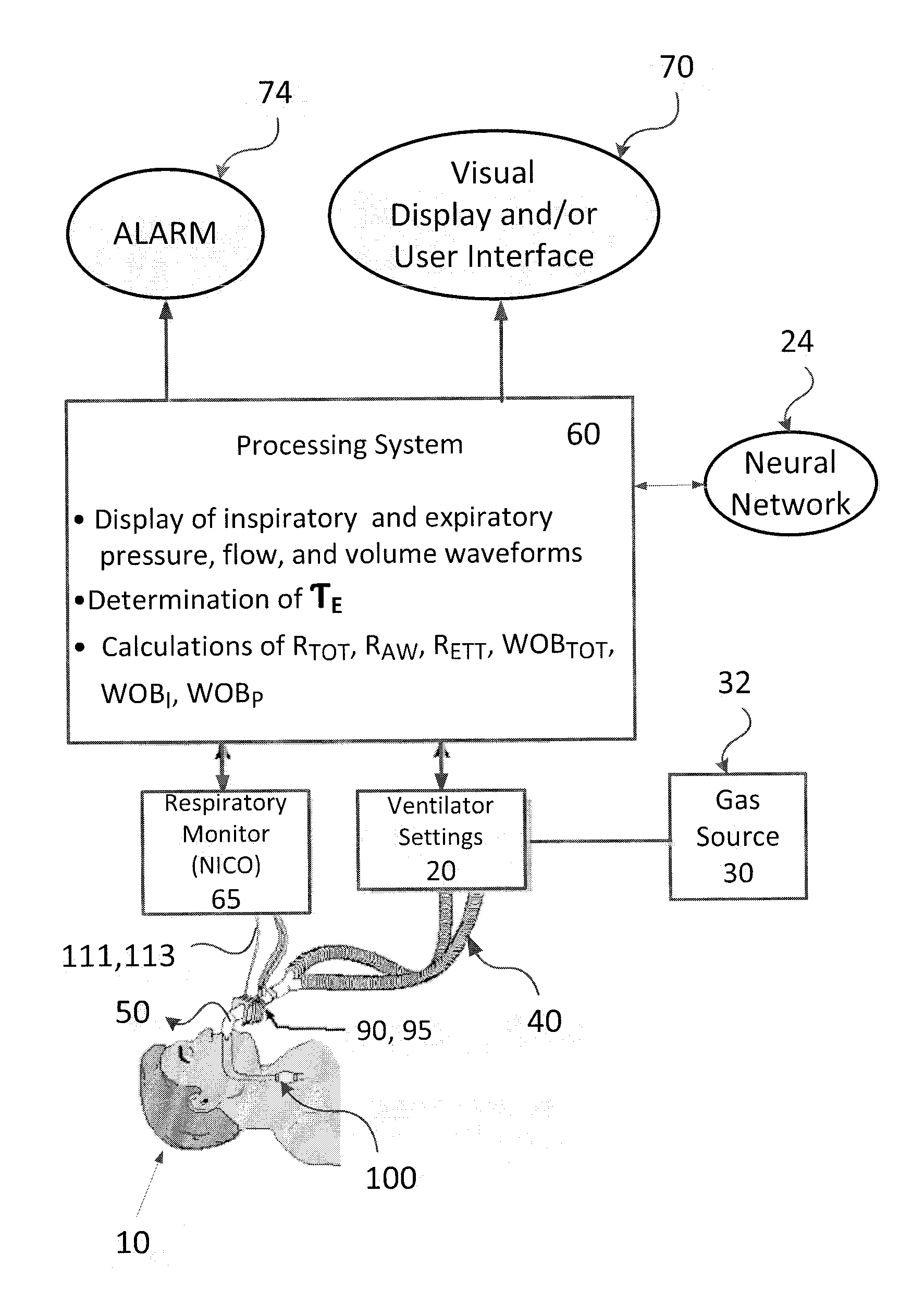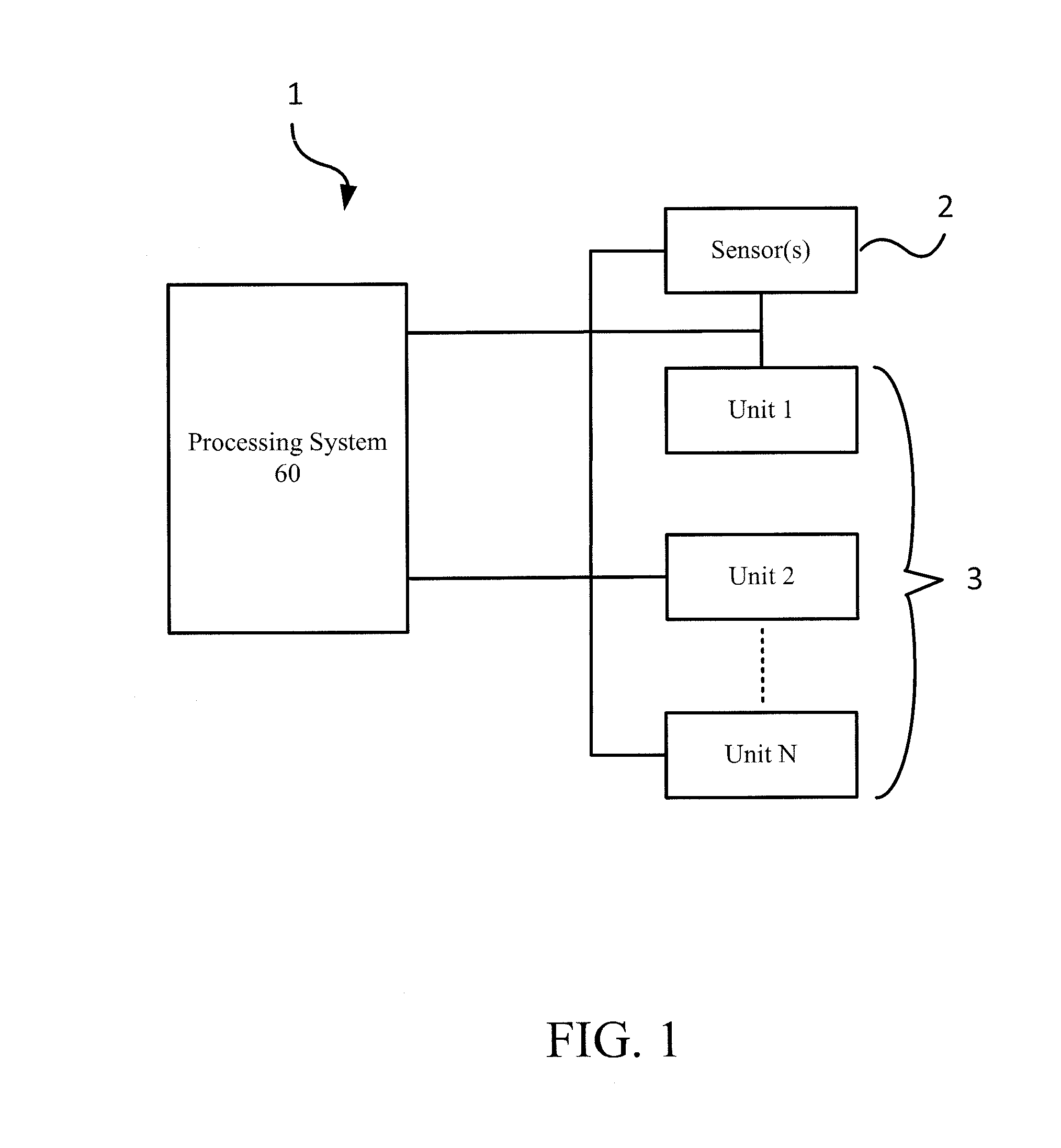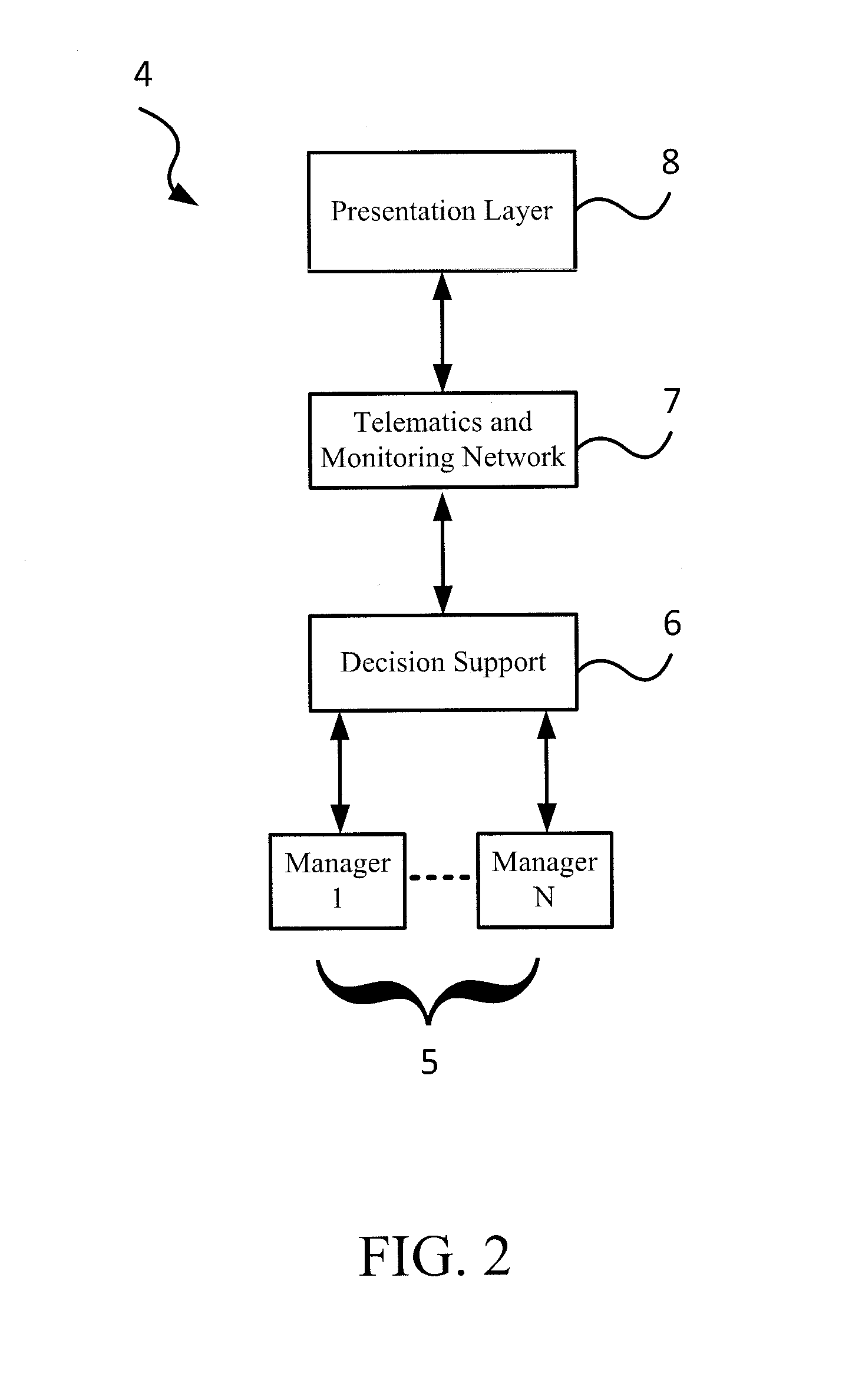Methods and systems for monitoring resistance and work of breathing for ventilator-dependent patients
a technology for ventilator-dependent patients and resistance, applied in the field of methods and systems for monitoring resistance and breathing work for ventilator-dependent patients, can solve the problems of inability to measure at the bedside of patients, unwanted side effects, nervousness, restlessness, etc., and achieve the effect of accurately estimating rtot and avoiding inspiratory muscle fatigu
- Summary
- Abstract
- Description
- Claims
- Application Information
AI Technical Summary
Benefits of technology
Problems solved by technology
Method used
Image
Examples
example 1
[0172]A patient was observed in the hospital setting with varying levels of pressure support ventilation (PSV) to determine if the algorithms as described herein using the endotracheal tube cuff can estimate the pressure at the distal end of the endotracheal tube (tracheal airway pressure). The control pressure was determined by inserting a catheter to the distal end of the endotracheal tube. The experimental pressure was estimated by monitoring the pressure inside the cuff of the endotracheal tube. The PEEP level was set at 5 cm H20. The PSV levels were 5, 10, 15, 20, and 25 cm H20. The algorithm using endotracheal tube cuff pressure was found to have high agreement with the tracheal airway pressure. FIG. 15 illustrates the results from the study, where the estimated tracheal pressure using the endotracheal tube cuff (PTrach Est) was in agreement with actual tracheal pressure as measured using the catheter (PTrach).
example 2
[0173]A patient treated with minimum ventilator settings (e.g., PEEP level set at 5 cm H2O, PSV level set at 5 cm H2O, and FIO2 at 0.3) can be assessed using the methods described herein to determine whether to wean and / or extubate the patient. As discussed above, current conventional methods only assess WOBTOT to determine patient status. However, determination of only WOBTOT does not enable the clinician to accurately assess whether a patient may be extubated or whether pressure support ventilation therapy should be amended.
[0174]Either an open or closed-loop system or operation for automated pressure support ventilation based on monitored WOBTOT, WOBP and WOBI can be applied to a patient being treated with minimum ventilator settings. With such patients, in either the open-loop or closed-loop operation, the processing system 60 automatically determines whether the patient should be weaned and / or extubated from pressure support ventilation therapy.
[0175]Initially, desired predeter...
PUM
 Login to View More
Login to View More Abstract
Description
Claims
Application Information
 Login to View More
Login to View More - R&D
- Intellectual Property
- Life Sciences
- Materials
- Tech Scout
- Unparalleled Data Quality
- Higher Quality Content
- 60% Fewer Hallucinations
Browse by: Latest US Patents, China's latest patents, Technical Efficacy Thesaurus, Application Domain, Technology Topic, Popular Technical Reports.
© 2025 PatSnap. All rights reserved.Legal|Privacy policy|Modern Slavery Act Transparency Statement|Sitemap|About US| Contact US: help@patsnap.com



